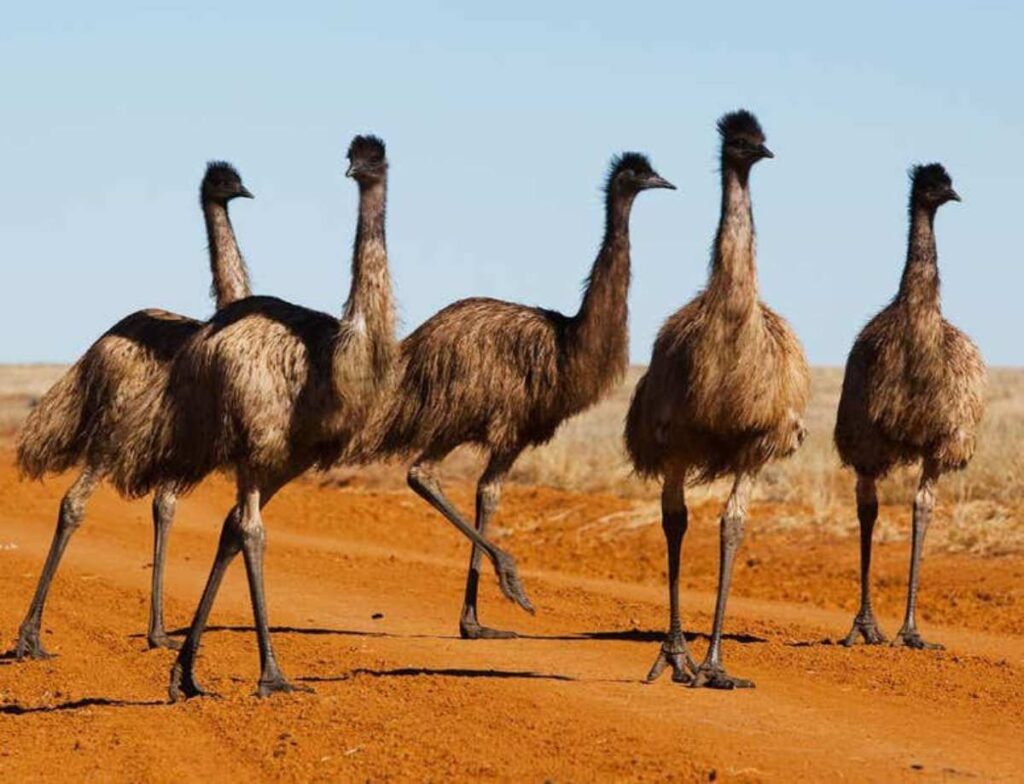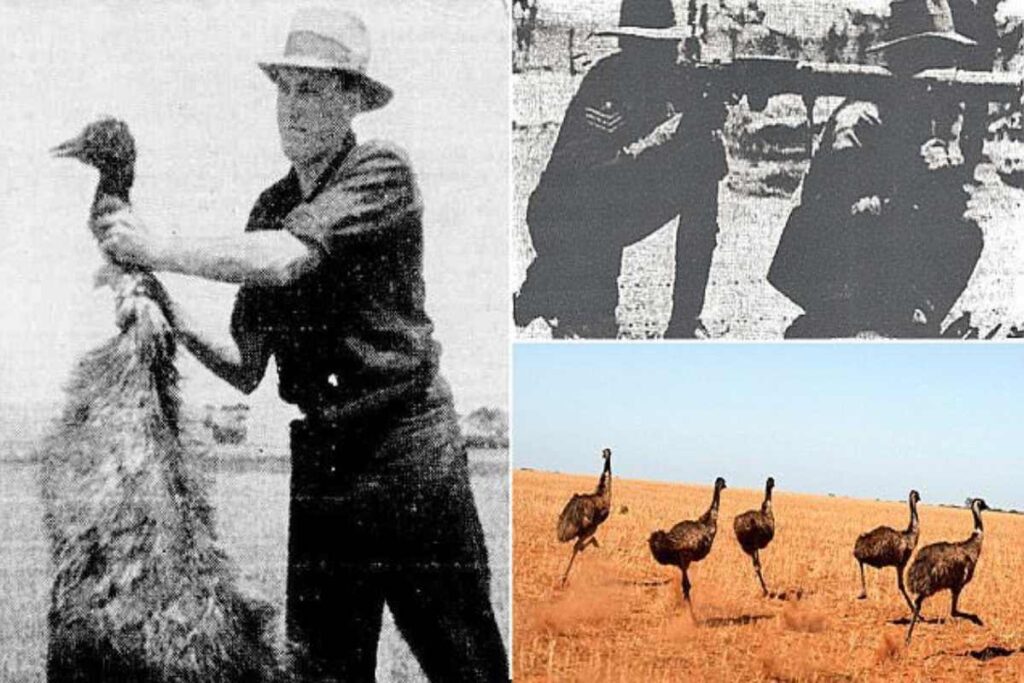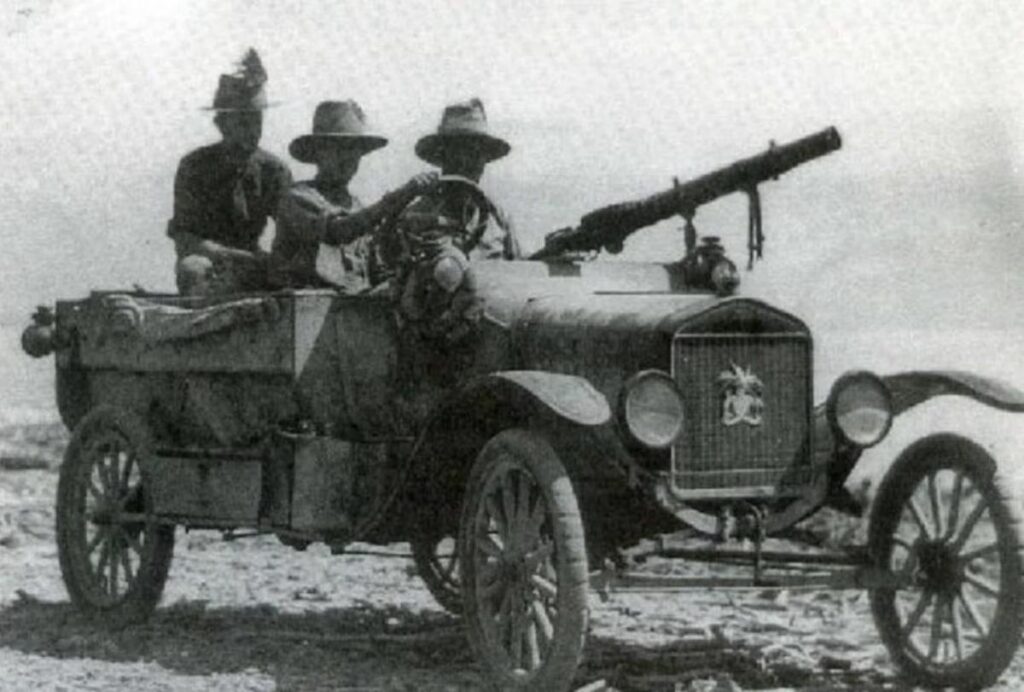Are you aware that the Australian government once waged war against animals and lost? Yes! That’s the story of The Great Emu War of 1932.
Imagine getting outsmarted by your poodle in a fistfight. Shocking right? That’s why the emu war has ranked at the very top of the most memorable battles ever fought. What you are about to read won’t only be hilarious. You’d likely find it hard to believe.
Less than a hundred years ago, humans and a group of lesser creatures engaged in an armed confrontation. In the end, tens of thousands of animals outsmarted humans in a never-before-seen battle. Not even our machine guns or superior intelligence could save us from embarrassment. This intriguing war story took place in the early 1930s.
At the end of the hard-fought World War I, Australia began welcoming its gallant soldiers back to their homes. Over 5,000 brave fighters made their way back to their permanent base. It had been 3 years of hostilities, and the combatants looked forward to a well-deserved rest. It was great to be finally home.
The government soon swung into action. They needed to appreciate the soldiers’ sacrifice. One way to go about this was to ensure a sweet reunion with friends and family. A smooth integration into normal life should also follow.
This means a guarantee of financial security. If the soldiers transitioned into successful wheat farmers, they would have enough to take care of themselves and their families. Authorities provided the former fighters with everything they needed to be prosperous wheat farmers.

The government apportioned each of them with land in the available Western part of the country, plus other needs. But these lands weren’t good enough. Despite the government’s best efforts, the lands weren’t too friendly for wheat farming. The former combatants had no option but to manage.
Throughout, they struggled with nutrient-deficient and harsh soil. In addition, the region suffered from insufficient rainfall. But things were about to get even worse.
In 1932, Australia was greeted by acute drought, forcing close to 20,000 emus to migrate to the Western part of the country. But what are these emus? Emus (Dromaius novaehollandiae) are massive, flightless birds that originate from the Australian outbacks.
Emus are the tallest native birds in Australia and the second tallest in the world behind the ostrich, standing nearly six feet tall. This means an emu will be as tall, if not even taller, than your bedroom door.
But that’s just one of its exceptional characteristics. The emus possessed the ability to stride over three feet. If you were to place a yardstick horizontally in front of them, they could jump over it with ease. When you learn that emus are a member of the ratite family—a group of dinosaur descendants, then that shouldn’t come as much of a surprise.
In their usual journey, which coincided with their annual breeding season, the birds invaded the farmlands during the post-harvest season. They ravaged the crops, with one bird consuming kilograms upon kilograms of wheat in a single day. Now take a step back and imagine the damage caused by tens of thousands of these hungry animals.

The birds, spurred by their desperation for survival, also broke down the farm fences, opening the doors to other animals, too. The farmers were devastated. Already, the Great Depression was in full swing and had brought down the prices of wheat. It was a frustrating period for the former soldiers who looked to the government for help.
Desperate to nip the challenge in the bud, government officials quickly thought up a solution. They opted for the fastest and most decisive option on their table: kill all the emus and preserve the produce. In a few days, the animals would all have been lying dead on the ground, they thought.
On November 2, 1932, the Royal Australian Artillery sent a three-man team of soldiers to the affected area. The group was led by Major G.P.W. Meredith and was armed with two Lewis machine guns. They collaborated with the soldiers-turned-farmers and launched an onslaught on the animals. But they were in for a rude shock.
Only thirty emus were gunned down after three days of intense shooting. The reasons? The emus had a number of characteristics that made them too much for even machine guns to handle. Their biggest advantage was their speed. The emus were incredibly fast. They could dash as fast as 31 mph.
Unlike most birds, emus have long and powerful legs with three toes each. These legs do not have as many bones and muscles as those of flying birds. They also had great help from their calf muscles being the only birds with this equipment. The calf muscles assist them with forward motion.

They also ran in a zig-zag pattern. This running style made a fool of any machine gun-wielding aggressor. The emus also scattered in various directions at the sight of trouble, making it difficult to be gunned down.
Emus also had interesting feathers. Individual feathers have a simple design. Unlike other birds that grow one feather per follicle, Emus have two feathers from each follicle. The feathers are initially black, but the sun fades them into grayish brown. This color aligned with the surroundings and helped them camouflage in the bushes. These birds also have sharp eyesight and hearing. These advantages helped them escape as soon as the soldiers approached.
After the emus made a fool of the former soldiers, one of them reportedly said the birds had their own military tactics. History also has it that one of the machine guns jammed during the onslaught, further frustrating the army of cullers. At some point, the soldiers reportedly took a break and prepped for a more brutal assault.
After day 45, the soldiers had only succeeded in killing 2,500 emus, a far cry from the total number. Soon, news of the emus’ resilience reached the larger population and evoked fascination and even admiration. Even the soldiers couldn’t help but praise the survival instincts of the birds.

According to Wynne-Aubrey Meredith, the animals “could face machine guns with the invulnerability of tanks.” The army soon began to review their strategy. Complete victory, even if attained, will come at such great cost that it wouldn’t be worth it in the end. In addition, the campaign was already drawing fierce opposition from the population who had begun to fall in love with the birds.
The government decided to halt the operations. That dear reader, is how Emus had secured an unlikely victory. They also earned some more respect for the animal kingdom as Australia introduced the bird in its coat of arms. Emus are also widely considered the most revered bird in Australia.
Although the Great Emu War ended in defeat for the humans, in the long run, it was a win for Australia. The birds have continued to be a reminder and a symbol of doggedness.
Australia has, in turn, instituted constitutional protections for the animal. Currently, the emu population is about 600,000. They continue to move around the country freely, enjoying the almost 100 years of mutual respect their ancestors earned.


